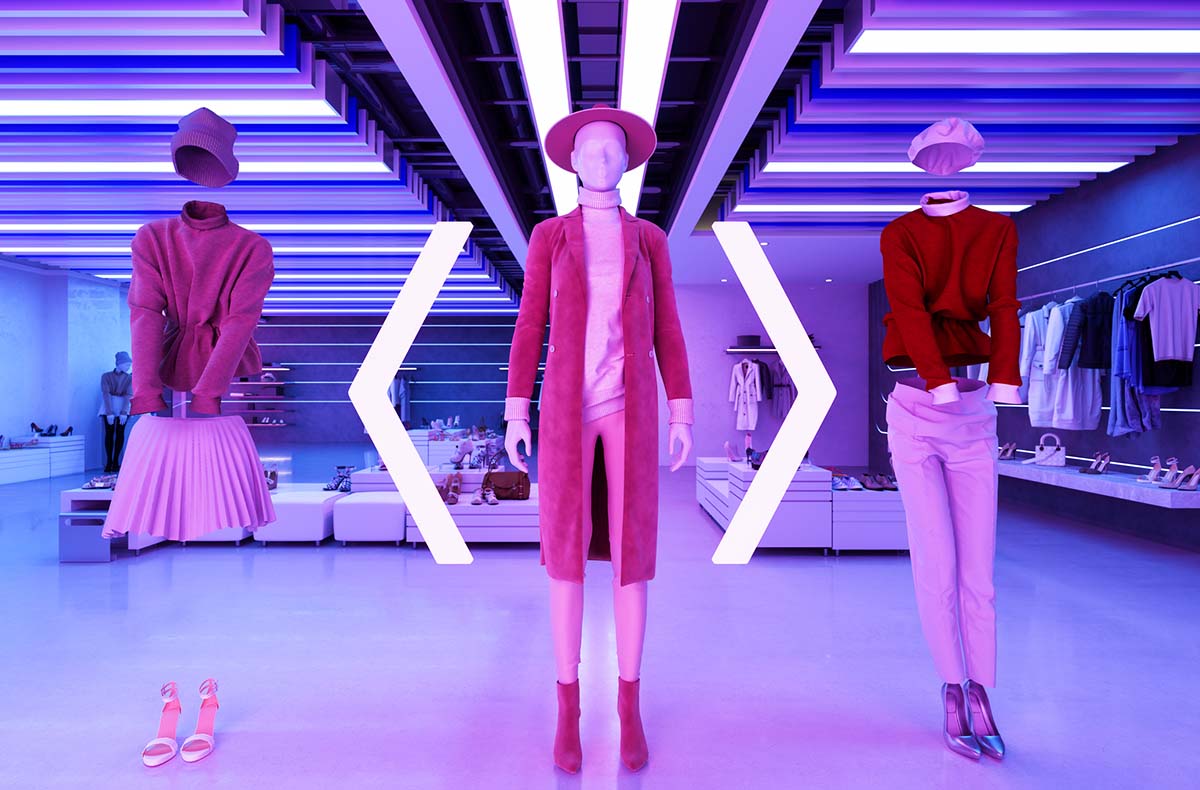
The slow death of brick-and-mortar shopping creeps ever-closer beneath the watchful eye of modern convenience. In its wake rises the burgeoning industry of online shopping, a thriving multi-billion-pound retail phenomenon.
At first glance, little could disrupt the industry’s soaring growth trajectory. Yet, in its path stands one particularly pervasive obstacle: size disparity. This pain point plagues every retailer dealing in products where fit is integral. Every success is often countered by the considerable volume of returns and customer dissatisfaction reaped by sizing inconsistencies.
This problem is intensified by the growing lack of brick-and-mortar shops, with many brands having limited to no physical presence for customers to gauge fit and feel in store. Major online-only retailers like Boohoo and Shein have seeded a culture of mass-order, mass-return, and are notorious for inconsistencies in sizing and quality.
Thus, many are left with a problem that poses one obvious solution: Ordering multiple of the same item in various sizes in a Goldilocks-like game of hopeful probability. Yet, often the sizing is still not right. The fit, feel, or style simply isn’t as anticipated—all items are returned.
Variations in sizing are not limited to online retailers alone, extending towards manufacturers and even the lone seamstress. It is an inevitable and enduring challenge for the industry, and a hurdle for reducing the environmental impacts incurred by excessive deliveries.
The research is clear: Technology like artificial intelligence (AI) and augmented reality (AR) are set to be a game changer. The impact of virtual product experiences on consumer perceptions and purchase intentions is paraamount, according to a 2012 study by Echo Huang.
Conclusively, these experiences delivered an increasingly accurate understanding of the product and were well received by participants. Further research as recent as 2020 corroborates this insight, suggesting that AR try-ons could positively impact customer engagement, reduce return rates (which would reduce the environmental impact), and increase sales.
In 2018, major fashion brand and household name Zara introduced its ‘virtual dressing room’. This innovation allowed customers to digitally visualize how clothes would look on various body shapes and sizes. Despite being inventive, proposed solutions such as these still fail to properly resolve the issue.
Too often, attempts at creating a ‘virtual fitting room’ experience remain inadequate, lacking the nuanced understanding of human body types, material drape, and individual taste. They cannot tangibly replicate fit or feel, texture or tactility, which are all distinctly principal elements of a shopper’s path to purchase. Hence, it is important to recognise one of the crucial pitfalls of current technology.
It consistently falls short in its ability–or lack thereof–to mimic the tactile experience of physical shopping. The feel of fabric against skin, the subtle hues that elude accurate portrayal when turned digital, the momentary judgment of a product’s fit and aesthetic—these are sensory experiences and snap decisions that technology, however advanced, may still find challenging to replicate.
Moreover, the exhilaration of shopping and the often-overlooked ambiance of an in-store experience can dramatically influence how customers feel and react to a product. Numerous research publications have revealed the distinctive psychological differences between physical and online shopping experiences, particularly when considering clothes.
Elements such as the atmosphere, immediate gratification, and personal desire hold immense sway over purchasing decisions, a nuance that the realm of e-commerce frequently grapples with capturing.
One only has to look back and consider the work of online retailers to see where faults arise. High-end fashion labels to high street brands have tried to tackle the problem with varying degrees of success. Notable brands such as ASOS have dabbled in ‘virtual sizing’, employing AR technology to overlay garments onto a shopper’s digital representation.
Major brands with multi-million-pound online channels, such as Ray-Ban, Nike, and Timberland, have all experimented with this approach, yet garnered limited success. The larger the online store, the larger the pile of returns to process. Retailers have significantly streamlined the return process—ostensibly to maintain conversion rates—without directly addressing the heart of the issue
With this in mind, it appears that tech giant Google has begun to clear a new path forward. Arriving mid-June, Google launched its “Virtual Try-On” AI tool. The feat has pioneered exciting strides in replicating the offline shopping experience, producing an experiential tool that is arguably more accurate than ever before. The frontrunner worked with the Monk Skin Tone Scale to increase diversity, catering to shoppers from size XXS to 4XL.
With a foundation of generative AI technology, it promises to depict how clothing would look on a variety of actual models, including an extensive range of skin tones and body types. Building on this, The Shopping Graph, claimed by Google to be the most comprehensive dataset of products and sellers, could enable an unprecedented scaling opportunity for more brands and items over time.
Moreover, the use of machine learning and visual matching algorithms to refine product searches offers an increasingly personalized shopping experience akin to having a virtual sales associate—a previously underused but often desired service.
While Google’s new tool holds promise, it’s important to retain a degree of cautious skepticism. After all, AR technology is hardly a novelty in the digital retail space, but a degree of trial-and-error is still likely to permeate the long and winding path forward to improved success and end-product integration.
Nonetheless, Google’s exciting foray into this space, backed by its vast reach and technological expertise, could still be a game-changer. The ambition behind its “Virtual Try-On” AI is remarkably refreshing.
If successful, it could revolutionize the online shopping experience and better still, reduce the volume of returns. Such innovative solutions to this endemic online shopping problem would also engender better sustainability. As the sprawling e-commerce landscape continues to evolve, only time will reveal if Google’s innovation truly is the answer to the size and fit issue that has long worked a thorn into the side of this industry.

